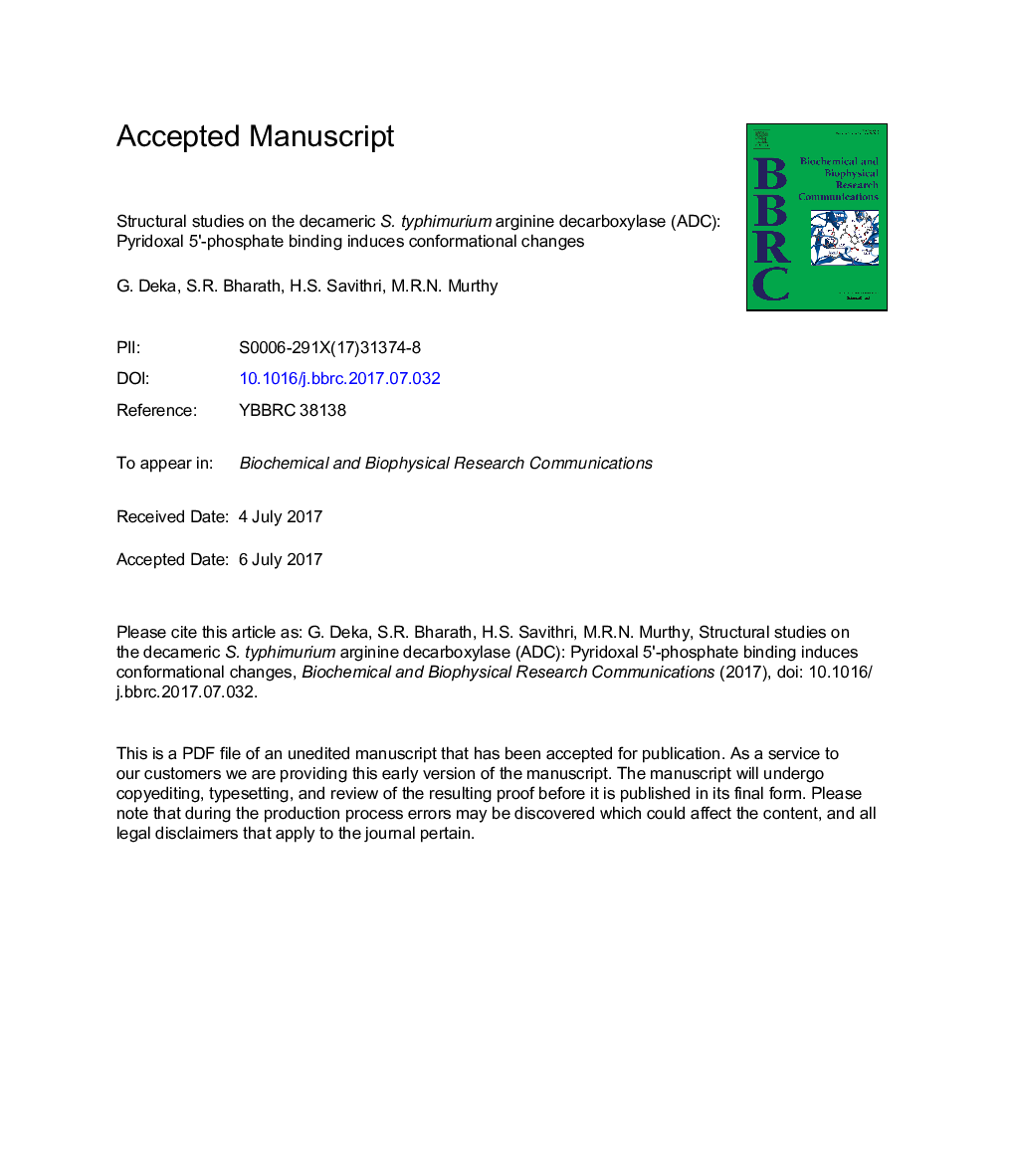| Article ID | Journal | Published Year | Pages | File Type |
|---|---|---|---|---|
| 5504864 | Biochemical and Biophysical Research Communications | 2017 | 24 Pages |
Abstract
Enteric pathogens such as Salmonella typhimurium colonize the human gut in spite of the lethal acidic pH environment (pH < 2.5) due to the activation of inducible acid tolerance response (ATR) systems. The pyridoxal 5â²-phosphate (PLP)-dependent enzyme, biodegradative arginine decarboxylase (ADC, encoded by AdiA), is a component of an ATR system. The enzyme consumes a cytoplasmic proton in the process of arginine degradation to agmatine. Arginine-agmatine antiporter (AdiC) exchanges the product agmatine for arginine. In this manuscript, we describe the structure of Salmonella typhimurium ADC (StADC). The decameric structure assembled from five dimers related by a non crystallographic 5-fold symmetry represents the first apo-form of the enzyme. The structure suggests that PLP-binding is not a prerequisite for oligomerization. Comparison with E. coli ADC reveals that PLP-binding is accompanied by the movement and ordering of two loops (residues 150-159 and 191-197) and a few active site residues such as His256 and Lys257. A number of residues important for substrate binding are disordered in the apo-StADC structure indicating that PLP binding is important for substrate binding. Unlike the interactions between 5-fold related protomers, interactions that stabilize the dimeric structure are not pH dependent.
Related Topics
Life Sciences
Biochemistry, Genetics and Molecular Biology
Biochemistry
Authors
G. Deka, S.R. Bharath, H.S. Savithri, M.R.N. Murthy,
